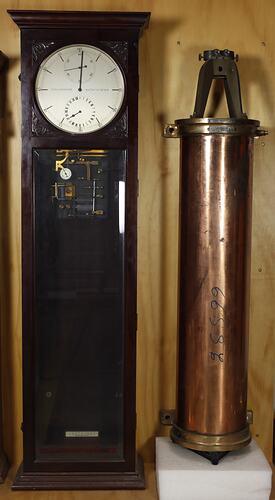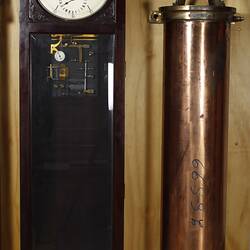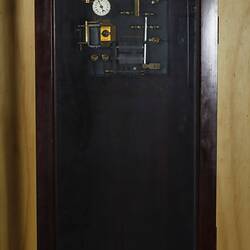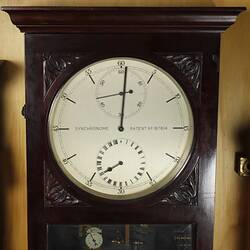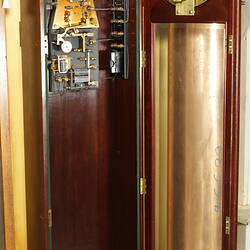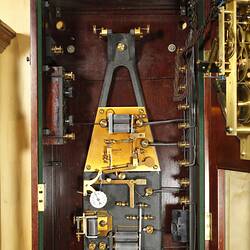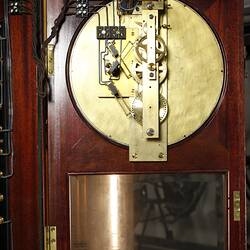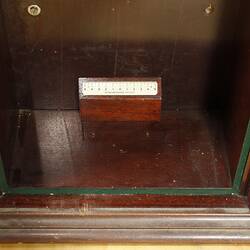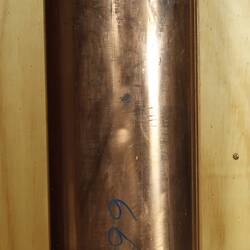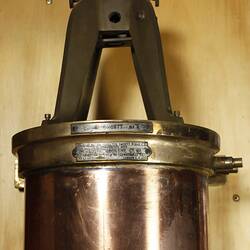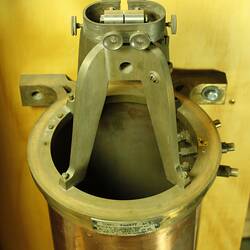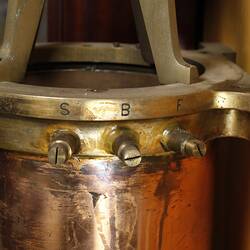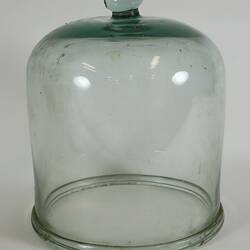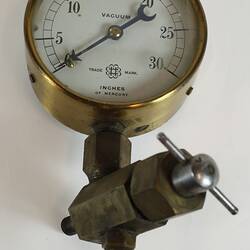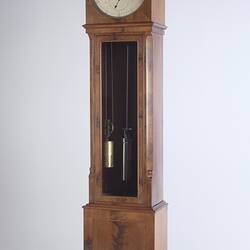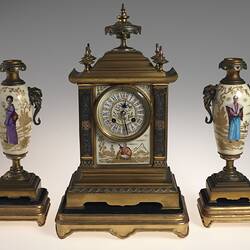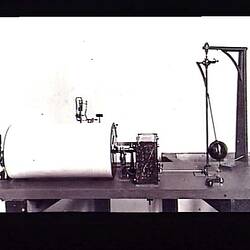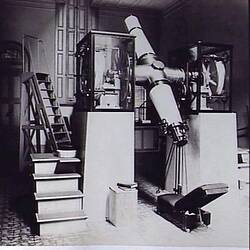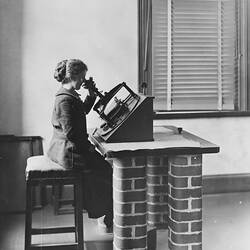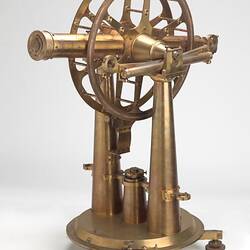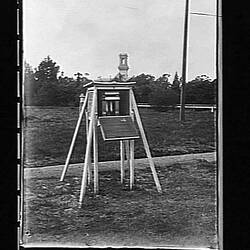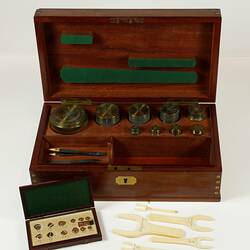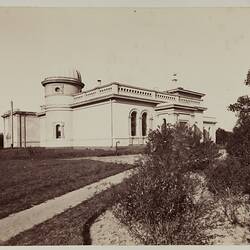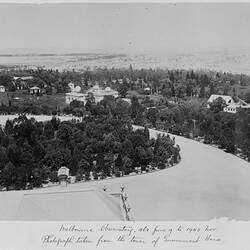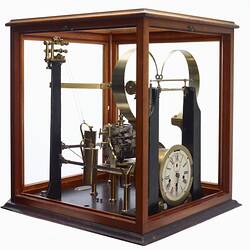Summary
Impulse clock designed and built by William Hamilton Shortt, in association with the Synchronome Co, London, 1925.
About 100 Shortt impulse clocks were made and used in observatories around the world. Shortt no. 5 was installed in the Melbourne Observatory in 1925, to run the Melbourne Observatory time service. It was transferred to the P.M.G. (Post-Master General) Research Laboratories in 1945, which took over Victoria's civil time service, and in 1955 transferred to the P.M.G. in South Australia, where it was used until 1968.
The clock comprises a free pendulum in an evacuated brass cylinder, and a slave pendulum in a Syncrhonome clock. The two pendulums swing together in precise sympathy, using a hit-and-miss synchronizer, so that the slave clock accomplishes the release of the gravity arm of the master clock and gives an impulse to the free pendulum.
More Information
-
Collection Names
-
Collecting Areas
-
Acquisition Information
Donation from Australia: Post Master General's Department (PMG), Mar 1972
-
Manufacturer
Synchronome Co Ltd, 32 & 34 Clerkenell Road, London, Middlesex, England, Great Britain, circa 1925
-
Designer
Shortt, William Hamilton, England, Great Britain, circa 1925
-
Past Owner or User
Australia: Post Master General's Department (PMG), Melbourne, Greater Melbourne, Victoria, Australia, 1945-1968
-
User
Melbourne Observatory, South Yarra, Greater Melbourne, Victoria, Australia, 1925-1944
-
Classification
-
Category
-
Discipline
-
Type of item
-
Overall Dimensions
20 cm (Length), 40 cm (Width), 140 cm (Height)
-
References
F. Hope-Jones, Electrical Timekeeping, 1940.
-
Keywords
